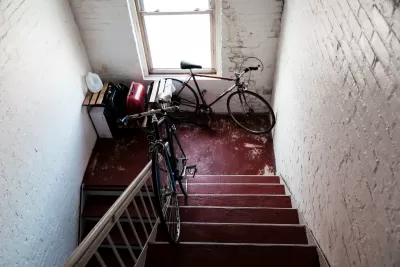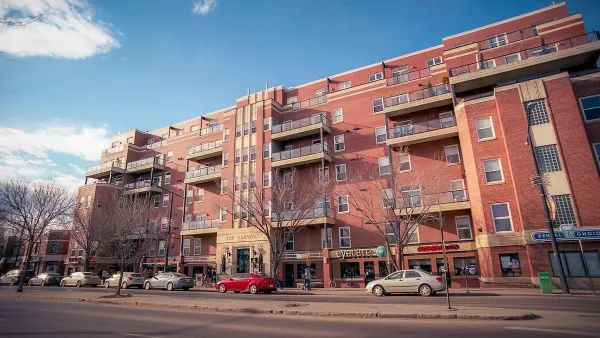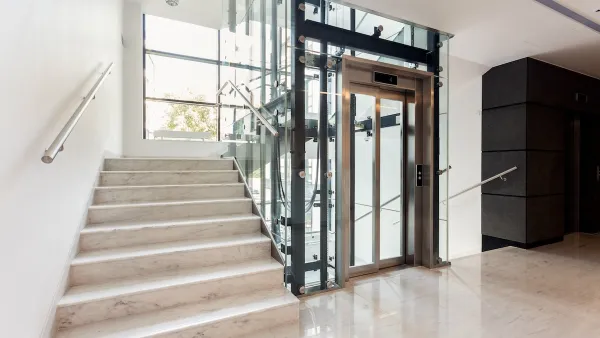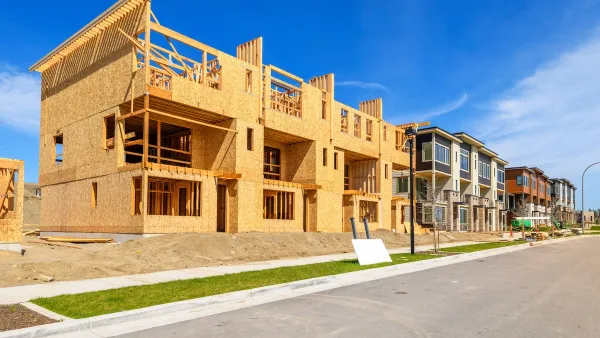The movement to legalize single-stair multi-story buildings is gathering momentum, with the typology offering a more efficient, flexible, and healthy way to build housing.

According to Julian Frost, writing in Greater Greater Washington, “The movement for single-stair reform may be reaching a critical mass of momentum and support in the US.”
Frost assesses the bills proposed in the D.C. region and how they might advance in 2025. In Frost’s view, “Single-stair reform would make small-lot infill development more feasible, and allow for generous, flexible, and well-ventilated apartment layouts.”
However, many global cities safely use single-stair buildings, which save space and make different layouts possible. “The legalization of six-story single-stair buildings would bring into play small infill lots that are currently infeasible to develop due to the geometrical constraints of the double-egress rule.” Single-stair buildings make it possible to give apartments windows on both sides of a unit, improving the health and mental well-being of residents.
The typology isn’t entirely absent in the United States, Frost notes, pointing out examples in Seattle and Brooklyn. But most U.S. building codes have called for multiple stairwells in taller multifamily buildings for decades, citing safety concerns. Now, bills to legalize single-stair buildings are being introduced at both local and state levels in dozens of jurisdictions including Maryland.
FULL STORY: How single-stair apartment reforms could advance across the region this year

Maui's Vacation Rental Debate Turns Ugly
Verbal attacks, misinformation campaigns and fistfights plague a high-stakes debate to convert thousands of vacation rentals into long-term housing.

Planetizen Federal Action Tracker
A weekly monitor of how Trump’s orders and actions are impacting planners and planning in America.

In Urban Planning, AI Prompting Could be the New Design Thinking
Creativity has long been key to great urban design. What if we see AI as our new creative partner?

King County Supportive Housing Program Offers Hope for Unhoused Residents
The county is taking a ‘Housing First’ approach that prioritizes getting people into housing, then offering wraparound supportive services.

Researchers Use AI to Get Clearer Picture of US Housing
Analysts are using artificial intelligence to supercharge their research by allowing them to comb through data faster. Though these AI tools can be error prone, they save time and housing researchers are optimistic about the future.

Making Shared Micromobility More Inclusive
Cities and shared mobility system operators can do more to include people with disabilities in planning and operations, per a new report.
Urban Design for Planners 1: Software Tools
This six-course series explores essential urban design concepts using open source software and equips planners with the tools they need to participate fully in the urban design process.
Planning for Universal Design
Learn the tools for implementing Universal Design in planning regulations.
planning NEXT
Appalachian Highlands Housing Partners
Gallatin County Department of Planning & Community Development
Mpact (founded as Rail~Volution)
City of Camden Redevelopment Agency
City of Astoria
City of Portland
City of Laramie





























